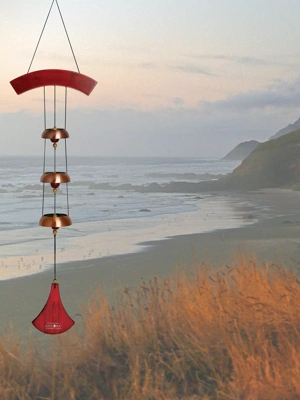10 Shade-Tolerant Plants for Sun-Starved Yards
Stick these shade-loving plants where the sun don’t shine!
 Dalmatian Peach Foxglove
Dalmatian Peach Foxglove While having a well-shaded yard or a shady area of your yard can seem limiting, there’s a wealth of options for perennial plants that are shade-tolerant or require shade to thrive. And while hostas are a go-to shade plant, notable for being a rugged and low-maintenance grower, there are plenty of other easy-care perennials that will have it made in the shade!
If you have a shady area that could use a little visual excitement, start with this list of 10 vibrant and vigorous plants that grow really well in the shade.
10 Great Shade-Loving Plants
 Chocolate Ruffles Heuchera
Chocolate Ruffles HeucheraHeuchera spp. (Coral bells)
Heucheras make fine shade plants. Plant breeders have had a field day with the genus heuchera. There seems to be no end to the variations in leaf color: silvery, burgundy, purple-black, chartreuse, salmon and rusty orange. With heuchera, its the foliage that provides the visual excitement, though some varieties also have showy flowers on tall, slender stems. The variety in the photo is called Chocolate Ruffles.
 Lamium
LamiumLamium maculatum (Dead nettle)
A low, spreading plant with silvery foliage and purple, pink, red or white blooms in early summer. In shady locations, I find this plant spreads happily — not invasively. If you wind up with too much of it, just give it a tug, lift out a whole section and pass it on to a friend. A great groundcover for shade!
 Tiarella
TiarellaTiarella cordifolia (Foamflower)
Similar to heuchera in leaf and form, tiarella has matte rather than shiny leaves, which gives it a slightly more "natural" look. The bottle-brush flowers are white or pale pink and I find them showier than those of most heucheras. New varieties often feature burgundy-red leaf veins.
 Pulmonaria
PulmonariaPulmonaria spp. (Lungwort)
Another shade plant with beautiful silvery foliage. Leaves are typically long and narrow, and may be entirely silver, spotted with silver or randomly splashed with silver. Lungwort flowers in spring and its blossoms are quite showy, ranging in color from white through pink and blue — with different colors often appearing on the same plant.
Astilbe
Known best for their colorful flower plumes, many of the newer astilbe varieties also have showy foliage that may be bronze, pale green, blue green, dark green or wine red. If you choose varieties with different foliage colors, bloom times and heights, they can add lots of interesting color and texture throughout the season. This shade plant also tolerates sun as long as it is kept well-watered.
 Foxglove
FoxgloveDigitalis (Foxglove)
Most foxgloves are biennials, which means they spend their first year growing foliage, their second year flowering and then they die. This may sound troublesome, but the plants usually reseed and sort things out so you wind up having flowers every year. I find Digitalis grandiflora the easiest and most reliable as a shade plant.
 Japanese Forest Grass
Japanese Forest GrassHakonechloa (Japanese forest grass)
Grass...as a shade plant? Yes! Unlike most grasses, Japanese forest grass grows and looks best in partial shade. It's short (12-15") and clump-forming, and the narrow leaves have a cascading habit. Depending on the variety, its foliage is golden green, lime green or variegated. Some turn red, orange or purple in the fall.
 Primula
PrimulaPrimula (Primrose)
Primrose is an easy-to-grow shade plant that will also tolerate partial sun provided it receives plenty of moisture and nutrient-rich soil. There are 425 species of primula. They come in every color of the rainbow and range in size from little 3-inch dwarfs to 4-foot giants. The photo shows Primula denticulata, also known as the drumstick primula. Colors range from white through lilac, pink and deep red.
 Euphorbia Polychroma
Euphorbia PolychromaEuphorbia (Spurge)
The beautiful, burgundy-leaved Euphorbia dulcis does self sow, but the seedlings can be easily removed (and given to appreciative visitors). I also like Euphorbia polychroma (shown at left), which is a dome of chrome yellow in late spring. In zones 5 and warmer, try Euphorbia polychroma 'Bonfire', which has three seasons of color. A variety named Jessie grows up to 4 feet tall. All Euphorbia thrives in both full and partial shade.
 Lady's Mantle
Lady's MantleAlchemilla (Lady's mantle)
When water falls on this plant's pleated leaves, it beads up into dazzling little jewels. The flowers, which appear in early June, are yellow-green and make a fabulous filler for bouquets of almost any color. This is a very long-lived and trouble-free shade plant. The standard-size plant is Alchemilla mollis. For small spaces, look for Alchemilla erythropa, which only gets about 6 inches high.
Last updated: 04/03/2024
Print this Article:
Related items
Get the Dirt
Stay up to date on new articles and advice. Please fill out the information below.


